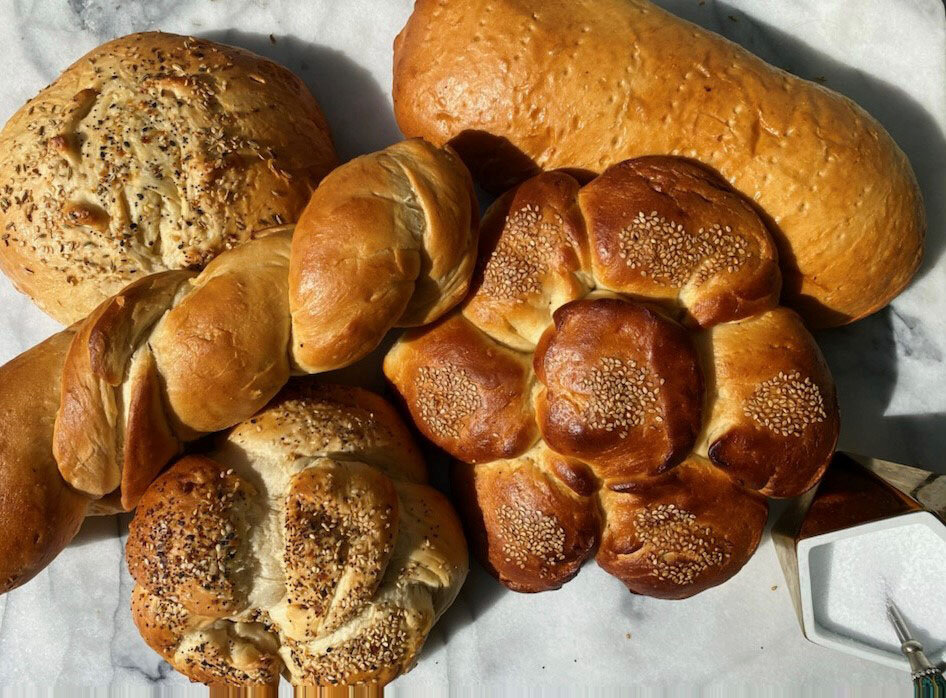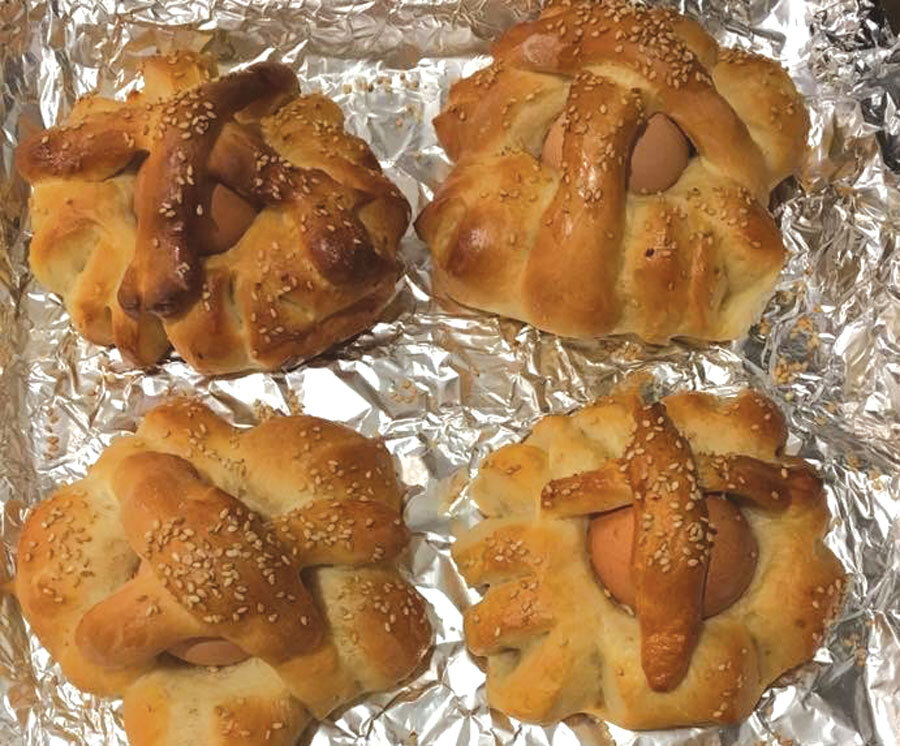There is nothing more heavenly than the wonderful smell and taste of freshly baked challah.

We will be watching Shtissel. We will probably be frying schnitzel. And, on social media, we’ll be keeping a keen eye out for all the fabulous Shlissel Challahs.
This first Shabbat after Passover is known as “Shlissel Shabbos.” Shlissel is the Yiddish word for key and many Jewish women bake challah in the shape of a key, or challah with a key shape on top or challah with an actual key baked inside. It is considered a “segulah” for “parnassah,” which translates to an omen for income and good fortune.
A custom among Jews from Germany, Lithuania & Poland, some opinions conclude that the key tradition may be borrowed from Christian neighbors, who baked keys into their bread for Easter. The German word for key is Schlussel and in olden days, all keys were cross-shaped. Either way, seeing all the creative challah shaping and baking on social media is lots of fun.
While the origins of this Ashkenazi custom aren’t clear, it is a lovely way to commemorate the Biblical history that this is the time that our ancestors in the desert stopped eating matzo and began receiving Manna from Heaven. After all, the two challahs that we eat every Friday night and Saturday lunch represent the dewy Manna. We don’t have the recipe for Manna, but we’re pretty confident that you and your loved ones are going to rejoice at the taste of our good friend Esther Avrahamy’s delicious challah recipe.
What makes this dough different from all those Shlissel Challahs is that it contains no egg. Great for vegans, but essential for Sephardic Jews for whom bread baked with egg is considered mezonot (cake blessing) rather than ha’motzi (bread blessing). Traditional Sephardic challah is not braided, so we baked the challah in the loaf shapes that resemble the traditional Middle East and North African “khebaz” bread. We baked crowns and easy pull-apart spring flowers. Anise seed lends a subtle sweetness and slight licorice flavor and white sesame seeds represent the pure white dew-covered puffs of Manna.
There is nothing more heavenly than the wonderful smell and taste of freshly baked challah. May your challah always rise, may your table be filled with good food and your home be filled with good fortune!
Esther Avrahamy’s Heavenly Challah Recipe
18 cups bread flour, sifted (5 pounds)
1 1/2 cup sugar
7 tablespoons yeast
5 cups warm water
1 cup oil
2 tablespoons kosher salt
Egg Wash
1 egg
1 tablespoon honey
Toppings
Anise seeds
Sesame Seeds
In a large bowl, pour 4 cups of flour, then add sugar, yeast and warm water.
Mix gently, then cover with a cloth and let sit for 8-10 minutes until it is frothy.
Add the oil, salt and remaining 14 cups of flour.
Mix until all the ingredients are well-combined, then knead for about 10 minutes.
Dough should be soft and springy.
If dough appears too wet, add 1/2 cup of flour.
If dough appears too dry, add a little water.
Preheat oven to 350°F.
Cover dough with a damp cloth and let rise for 1 hour.
Punch down and form dough into desired challah shapes.
Brush with egg wash.
Bake for 20 minutes.
Bread is ready when the bottom of the bread sounds hollow.

